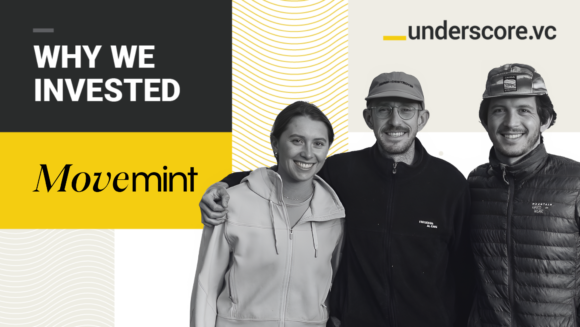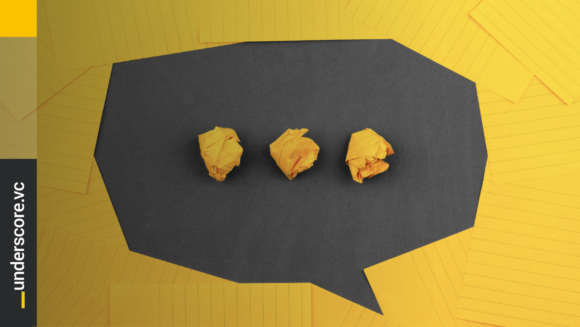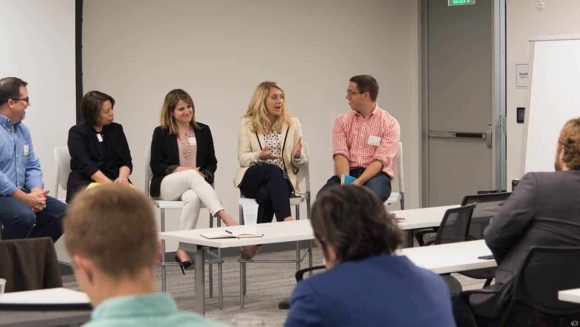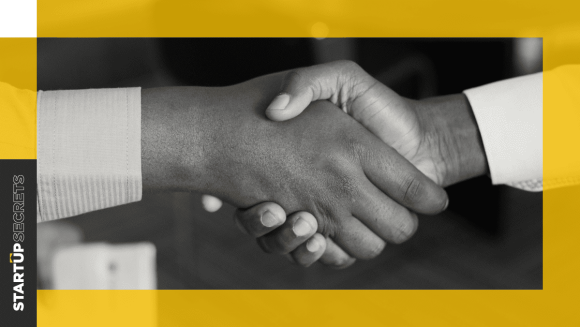A customer advisory board (CAB) is a closed, select group of customers that occasionally meets to share ideas, feedback, and insights. A CAB is not the same as a formal advisory board—a paid group of industry or functional experts that advise your startup.
The Value of a Customer Advisory Board
The value of a CAB is twofold. In the short term, you get a chance to receive unfiltered feedback on your product plans before you invest time and resources into implementing them.
But in the long run, you strengthen relationships with key customers who can become:
- Great investor references for your next round
- Strong case studies for future marketing efforts
- New referrals to prospective customers
In all, it’s well worth the effort.
How to Organize a Customer Advisory Board
The saying “crawl, walk, run” applies here. You don’t need to over-engineer it; start small and scale over time.
The mindset: This is not a sales meeting—you’re not trying to get them to do anything other than share their opinions and participate. You’ve got to be transparent and vulnerable with them.
Who should be in it?
Deciding who to invite is the most significant hurdle. Keep in mind the high-level goal: to gather feedback from customers.
Ideally, you’ll invite people who are opinionated, talkative, and easy to engage—and with whom you already have a relationship. Think through:
- Who has been using your product?
- What have they been using it for?
- Who has the strongest product engagement?
- What challenges have they had?
- How enthusiastic are they about your product?
A handful of customers will likely come to mind. Start with them.
Can you invite customers that are competitors?
This may be less of an issue than you think, and there are ways to work around it. First, simply ask some invitees if this would be a concern:
- Are you interested in joining a customer advisory board? We’d discuss our roadmap and technical issues, and you’d talk about your experience using our product.
- If so, are there companies you would have a problem being in a room with while discussing this?
- Is there anything we could do to ease these concerns?
And second, remind everyone not to share confidential information! Their responses will inform your decision.
How do you incentivize customers to attend?
We do not recommend paying your CAB. Instead, entice them with three key opportunities:
- To build their network
- To get more leverage from your product
- To vote on future feature functionality
If you’ve focused on an ICP, your customers will be using your product to solve the same problem, and these three opportunities will help them solve their pain in the long run.
Note: Share an attendee list, agenda, and speaker bios in advance so customers can build a business case and get approval to travel and attend the event.
Networking
A CAB is a terrific way for these customers to build their network in an intimate, curated environment. Because of the overlap in their roles, they’ll have valuable experience and knowledge that they can share.
Before the event, share an attendee list—name, title, contact info—and encourage them to stay connected via a virtual meetup or Slack group after the event.
Product Leverage
They’ll learn best practices on how to use your product from your own team, and they’ll also gain insight into how others are using it. This can enhance their efficiency and efficacy.
Feature Functionality
A CAB also lets them inform the product you’re building for them. If they want X feature and can explain why, then they just might get it!
How do you plan a first meeting?
Stay scrappy, and don’t overthink. After all, it’s mostly about the people you get in the room.
No Sales Allowed
Perhaps most importantly: This is not a sales meeting. You may even want to ban salespeople from attending. This is strictly for product and engineering teams. No other vendors should attend.
Dinner the Night Before
Ask attendees to travel the day before for dinner. That way, you can break the ice and do introductions before the official event.
On the formal day of the CAB meeting, set an agenda with a mix of presentations and discussions.
It can be helpful to have a combination of internal and external presentations throughout the day.
Sample Agenda
The objective is to get everyone communicating. A sample agenda could include the following:
- 9:00-10:00 – Breakfast + Networking
- 10:00-11:00 – Inside-Out View (Product/Engineering)
- Product Overview: What have you built and why?
- Product Roadmap: In what direction are you taking it?
- Product Future: What’s your long-term vision?
- 11:00-12:00 – Outside-In View (industry analyst)
- Industry Analysis
- Future Trends
- 12:00-1:00 – Lunch + Networking
- 1:00-2:00 – Customer Presentation + Discussion
- We use the product for XX cases…
- We have XX problems…
- We built XX on top of it…
- We’ve dug into XX data…
- Here is a demo…
- 2:00-3:00 – Customer Presentation + Discussion
- 3:00-4:00 – Customer Presentation + Discussion
- 4:00-5:00 – Happy Hour + Networking
- 5:00 – End
To get the most out of the feedback, it helps to include your full Product and Engineering Teams in the room to hear the full discussions.
How much prep work should facilitators do?
Customers need not do prep work unless they’re giving a presentation, but presentation prep should be a low lift. They should walk the group through a process or plan they already have. They’re just doing it with an audience this time around.
Similarly, your Product and Engineering Team should take their existing roadmap documents, scrub them of any sensitive or confidential information, and use those to share their plans.
The intention is to have authentic discussions, and the more authentic the presentations are, the more genuine the feedback will be.
What’s the cadence?
A six-month cadence is a good starting point. Then, as it scales, you can reduce that to annual (for a user conference, for example).
How much time and resources should you allocate to this?
Resources allocated to your first CAB should be minimal.
Budget
You can use your office space or rent an inexpensive conference room at a Workshare. Catering breakfast and lunch will likely cost you a few hundred dollars. And budget for dinner the night before, estimating $XX per head, depending on your location.
Depending on your ACV (and how invested customers are in your product), you may need to cover travel and hotel expenses. In this case, consider inviting more local customers to keep costs down.
Time
As described above, presentations need not be overly prepared, and leveraging existing docs will greatly reduce prep time.
To book space, make a dinner reservation, and order food, you’ll likely need to set aside a couple of hours to find suitable options.
What kind of follow-up is involved?
Use any follow-up as an opportunity to collect feedback. After the meeting, send a simple survey like an NPS:
- Was this event valuable to you?
- What did you like?
- What could we have done better?
- Would you recommend this to a peer?
- Would you come back for another?
And then refine the next meeting with this information.
How a Customer Advisory Board Evolves
With each iteration, the group can get a bit larger. For example, a subsequent iteration could include 15 customers, and the following year’s meeting could have 30 to 40.
If it reaches roughly 50, you could tack it onto a relevant industry event and call it a User Group. And one day, it could even become a customer conference like HubSpot’s Inbound or Salesforce’s Dreamforce.
As your customers grow and your revenue grows with them, you can gradually scale the team that oversees these event operations.










